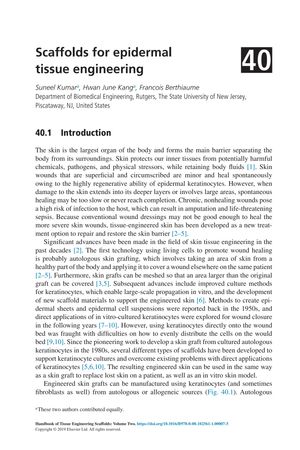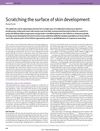Scaffolds for Epidermal Tissue Engineering
January 2019
in “
Elsevier eBooks
”
epidermal tissue engineering scaffolds keratinocyte autologous grafts allogeneic grafts epidermis wound repair skin wounds natural biomaterials synthetic biomaterials hydrogel self-assembly electrospinning salt-leaching bioartificial skin skin regeneration skin scaffolds skin grafts skin healing wound healing skin-on-chip

TLDR New scaffold materials help heal severe skin wounds and improve skin regeneration.
The document from 2019 provides a comprehensive overview of the progress in epidermal tissue engineering, focusing on the development and use of scaffolds for healing severe skin wounds. It explains the challenges associated with direct keratinocyte application and the subsequent creation of scaffold materials to support these cells. The document compares autologous and allogeneic grafts, noting the safety and availability trade-offs between them. It describes the anatomy of the epidermis, the wound repair process, and classifies skin wounds by depth. Various materials for scaffolds are discussed, including natural and synthetic biomaterials, and methods such as hydrogel self-assembly, electrospinning, and salt-leaching. Clinical and animal studies using different biomaterials for wound healing are overviewed. The document also explores nonclinical applications, such as skin permeability tests and skin-on-chip devices, and discusses the future of bioartificial skin, including commercial availability, cost, and manufacturing challenges. Advances in biomaterials are anticipated to overcome current limitations and improve skin regeneration.





